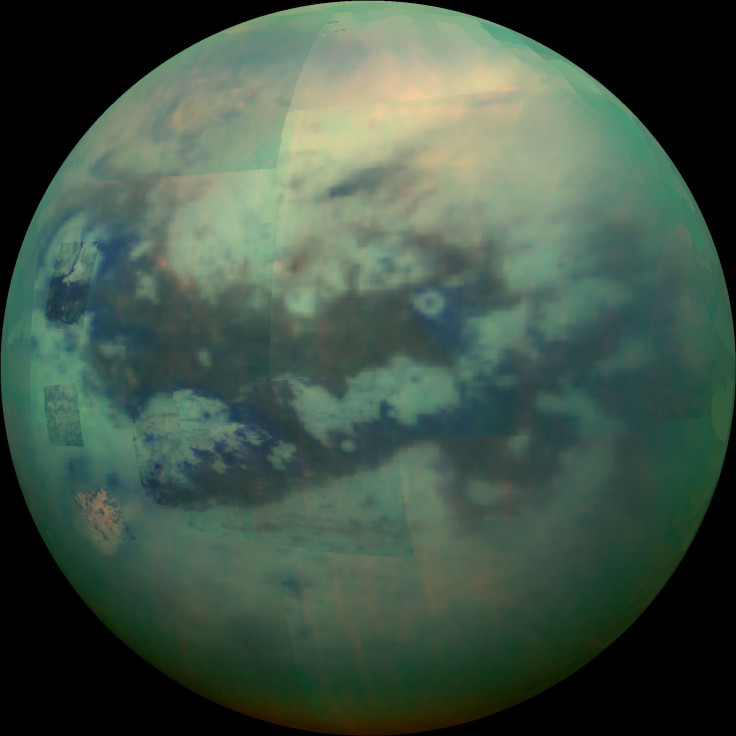Building Sand Castles On Saturn’s Titan Moon Would Be Easy With Static Electricity

You do not want to be on Titan when the breeze starts to pick up — you could turn into the Sandman.
On this moon of Saturn, the electric charge in the grains of sand makes them stick to each other, and theoretically to anything else nearby, a study in the journal Nature Geoscience explains. Their attraction is so strong that mountains of sand can stand tall against gusts of wind.
The electrical charges build up when wind makes the particles on Titan’s surface rub up against one another, creating friction. We don’t see this kind of buildup on Earth because our gravity is higher and individual grains of sand caught up in a sandstorm here are each more dense than the particles on Titan, researchers say. That lower density on Saturn’s biggest moon means “electrified particles with larger charge-to-mass ratios,” and thus more static electricity.

The Georgia Institute of Technology, who has a professor helping to lead the study, compared it to a balloon clinging to your hair — possibly for days on end.
“If you grabbed piles of grains and built a sand castle on Titan, it would perhaps stay together for weeks due to their electrostatic properties,” Josef Dufek, that Georgia Tech professor, said in a university statement. “Any spacecraft that lands in regions of granular material on Titan is going to have a tough time staying clean. Think of putting a cat in a box of packing peanuts.”
Read: A Supermassive Black Hole Farts, and a Baby Star Is Born
For their research, scientists recreated conditions on Titan in a laboratory to study the process. Their findings could help explain some strange observations of the moon: While the wind on Titan blows from east to west, it has appeared that Titan’s enormous sand dunes are formed as if the wind was blowing from the opposite direction. According to the study, however, the electric charge making the particles stick together suggests the clumped sand is held together strongly enough to resist anything less than a heavy wind. And that means this electrification is influencing Titan’s geography.
The difference between sand properties on Earth and on Titan can be simplified to a comparison of sand castles: Georgia Tech notes that while you need water to design a structure on an Earth beach, you could do without it on Titan.
“Titan is a strange, electrostatically sticky world,” Dufek said.
Titan is the second biggest moon in the entire solar system after Ganymede, which revolves around Jupiter. But it is still special in that it is “the only moon in our solar system that has clouds and a dense atmosphere, mostly nitrogen and methane,” according to NASA. It is also the only other place other than Earth that has liquid flowing on its surface in a way that is similar to here. The rivers and lakes on its surface, however, are not water — they are ethane and methane. “These liquids form clouds from which the liquid gases sometimes rain from the sky as water does on Earth.”
NASA’s Cassini spacecraft has sent back data and images from Titan in recent years that have revealed new information about the moon, such as the idea that it may contain volcanoes.
See also:
© Copyright IBTimes 2025. All rights reserved.





















